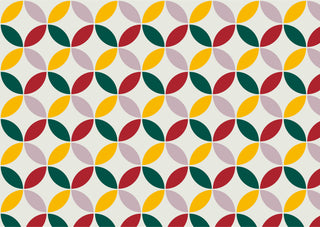Silk is a luxurious fabric that has been prized for centuries for its beauty, softness, and versatility. However, not all silk is created equal. Among the many types of silk, two stand out for their unique textures and finishes: silk satin and silk twill. Both fabrics are made from 100% silk, but their weave, appearance, and best uses differ significantly. In this blog, we’ll explore the key differences between these two fabrics to help you make an informed decision when selecting your next silk accessory or garment.
What is Silk Satin?
Silk satin is known for its smooth, glossy surface and luxurious drape. The hallmark of satin is its distinct weave, which results in one side being shiny and reflective, while the other side is matte.
Characteristics of Silk Satin:
- Weave: Satin is created using a weaving technique that allows warp threads to float over weft threads. This results in the glossy surface satin is known for.
- Texture: Silk satin is incredibly smooth and soft to the touch, with a fluid, almost liquid-like drape.
- Finish: The front side has a high sheen, making it ideal for occasions that call for elegance and glamour.
- Weight: Typically lightweight, silk satin feels delicate and luxurious against the skin.
Best Uses of Silk Satin:
- Evening gowns and bridal dresses.
- Scarves and hair accessories.
- Pillowcases and bedding.
- Lingerie and robes.
Silk satin’s glamorous finish makes it perfect for adding a touch of sophistication to any outfit or home accessory.
What is Silk Twill?
Silk twill is a fabric characterized by its diagonal ribbed texture, created through a twill weave. This weave involves a pattern where warp and weft threads cross over and under each other in a specific sequence.
Characteristics of Silk Twill:
- Weave: The twill weave creates a subtle diagonal texture, giving the fabric a unique, understated elegance.
- Texture: Silk twill is smooth but has a slightly more structured feel compared to satin. The diagonal weave adds durability without compromising softness.
- Finish: While it doesn’t have the high-gloss sheen of satin, silk twill has a refined, matte finish with a gentle luster.
- Weight: Typically lightweight, silk twill offers a balance of softness and structure, making it durable yet luxurious.
Best Uses of Silk Twill:
- High-quality scarves (often used by luxury brands).
- Ties and pocket squares.
- Dresses and blouses that require a bit of structure.
- Decorative and durable home items, like cushion covers.
Silk twill’s combination of elegance and durability makes it a versatile choice for both fashion and home decor.
Which One Should You Choose?
The choice between silk satin and silk twill ultimately depends on your needs and preferences:
- For Glamour and Elegance: If you want something with a high-shine finish for formal occasions or luxurious accessories, silk satin is the way to go.
- For Versatility and Durability: If you're looking for a fabric that balances elegance with practicality, silk twill is ideal.
At Lulu Lane, we offer a stunning collection of hand-rolled silk scarves made from silk twill, and a collection of machine-hemmed silk scarves and bandanas made of silk satin. We work directly with the artisans to offer you luxury yet affordable silk scarves. Whether you prefer the glossy allure of satin or the understated elegance of twill, our scarves are crafted to elevate your style effortlessly.





